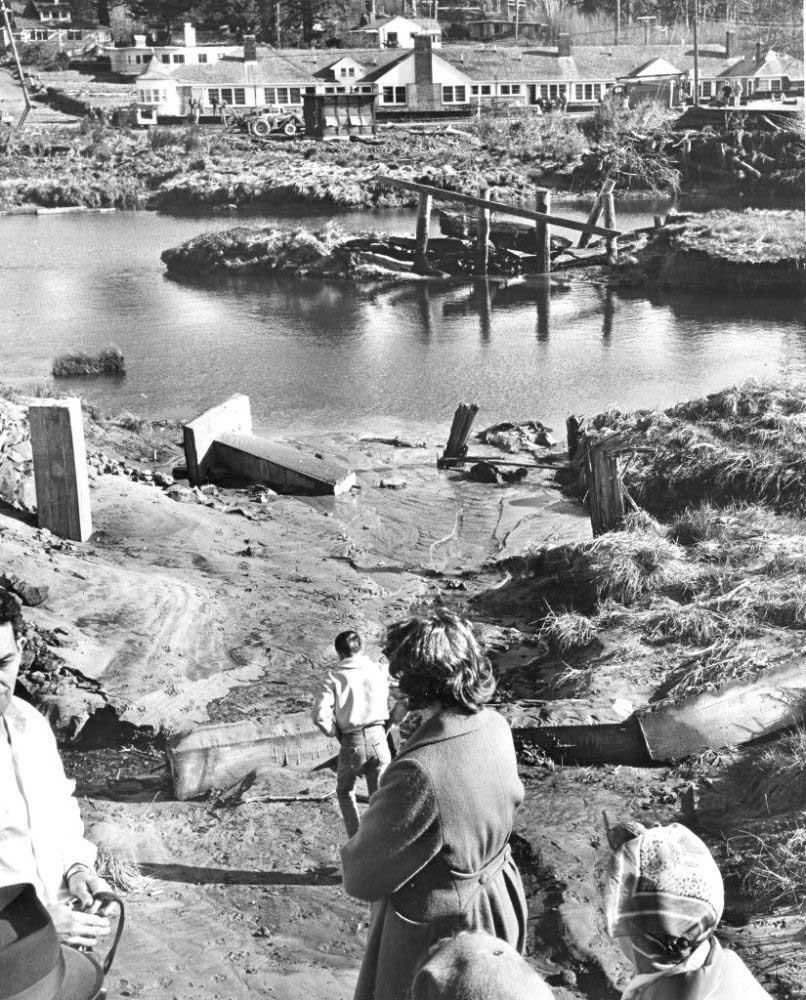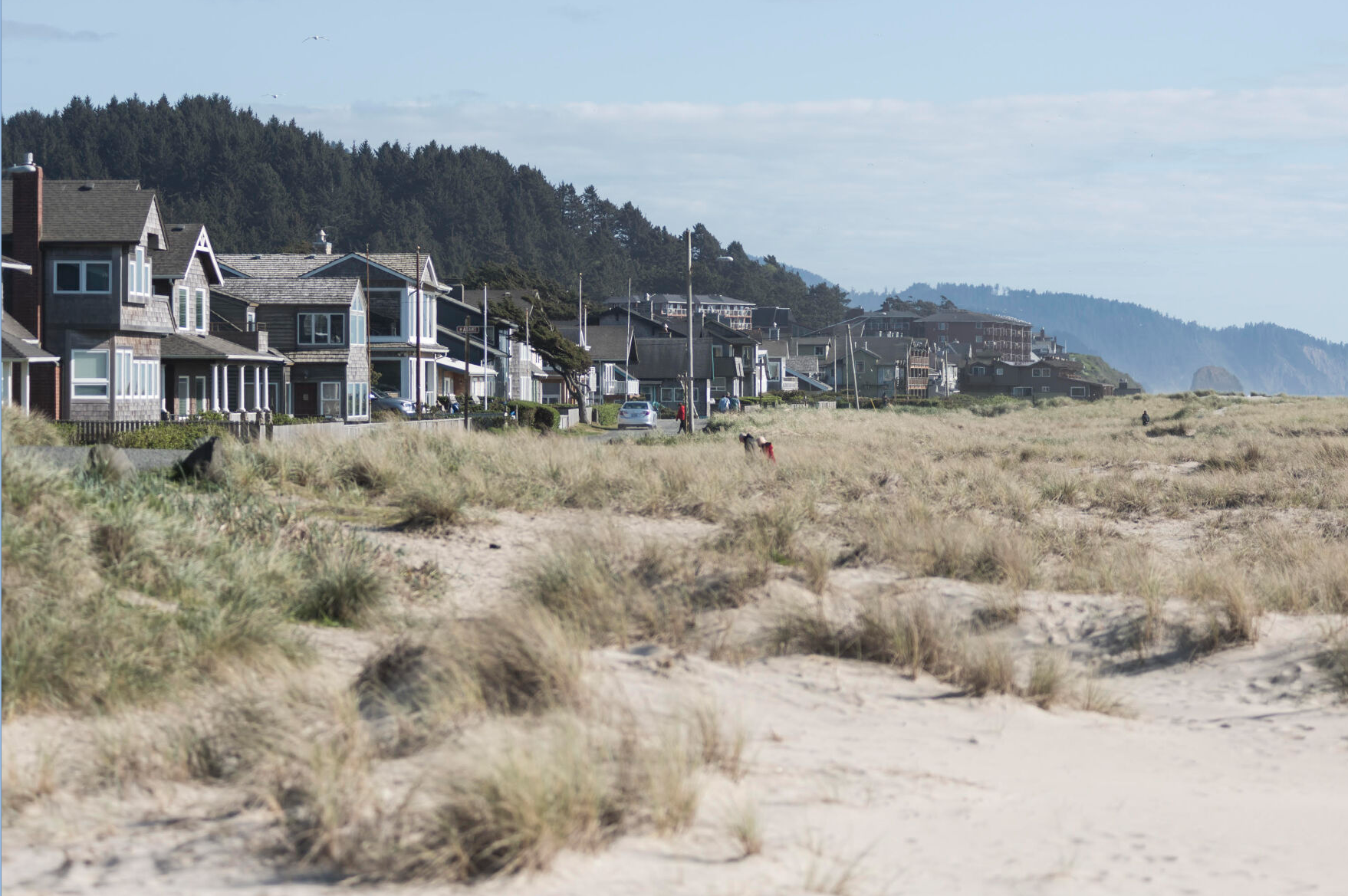Recalling the vivid memory of a ‘wall of water’
Published 5:00 pm Sunday, March 30, 2014

- <p>When the "Good Friday" tsunami hit Cannon Beach on March 27, 1964, the bridge over what was then called "Elk Creek" (now Ecola Creek) was knocked off its pilings by a house that floated up the creek. The photograph shows the view to the north across the creek. The motel, now known as Ecola Creek Lodge, is across the creek.</p>
A version of this story originally appeared in the Cannon Beach Gazette on March 30, 2000
Trending
They werent called tsunamis when we were growing up, they were called tidal waves.
There were no moos that announced the news over the town public address system. It was an air raid siren reminiscent of World War II.
More than long, lazy days spent building sandcastles, flying kites and skimming our pypo-boards along the oceans edge would be the vivid memory of a wall of water rising above the rooftops and rudely awakening our sleepy coastal town on March 27, 1964.
Trending
Rousted from our beds near midnight, we were instructed to grab our coats and shoes and run! We grabbed our dog on the way out, clinging to him for dear life, but distraught that our cat was nowhere to be found.
Anxiously waiting in our candy apple red station wagon with the wood side paneling, we watched our dad, a motel owner, run from cottage to cottage beating on the doors and shouting to warn our customers of the rapidly impending danger. (The cottages were on the waterfront, at West Second and North Larch streets, where Schooners Cove Ocean Front Inn is today.) After what seemed like an eternity, he dove into the drivers seat, and we headed for the hills.
Both lanes of Hemlock Street, the one main street in Cannon Beach, flowed heavily in the northern direction until it was our turn to cross the one wooden bridge out of town (over Ecola Creek). There is a mental picture of a Volkswagen speeding past us and being on that bridge as Elk Creek (now called Ecola) swelled to the top of the creek bank. All of a sudden, just before we reached the bridge, our car lurched as the front wheels hung over the embankment where once pavement had been.
A two-story gold-colored house that had fallen off its foundation spun around on its unexpected journey up the creek like a scene from the Wizard of Oz. Screaming for us to get down on the floor, our mom spared us from other frightful things that we may have witnessed there.
After many frustrating attempts to free our car from its precarious position, the tires miraculously caught onto something on the embankment and forced us upward and backward. We were delivered from one stressful set of circumstances to another. Turning around (and heading south) we headed back up a street that no longer existed.
A rush of ocean water rose near the window level, choking the engine. Dad pulled himself out through the window and fought the current to pull the hood open.
Somehow, the engine roared to life and Dad flew back in through the window. Our car, now on Hemlock Street, crept through the high water, past familiar buildings, illuminated only by the moonlight. Just past the Presbyterian Church, the elevation of the road rises, and soon we turned onto Sunset Boulevard and then north on U.S.Highway 101.
Spending the night in the back of our Ford station wagon at the viewpoint just north of the first Cannon Beach exit, we wrapped blankets around ourselves and gazed at the stars in the clear night.
In the morning, we drove to what was left of our home. The old wooden bridge left behind its pilings, and the Pacific Ocean left behind everything you could imagine anyone ever owning on the beach. When we returned to school, we could hear the heavy machinery on the beach scooping up the dead horses that were in a field when the tidal wave hit.
Webbs Cottages entire yard had been sucked out to sea by the violent waves. Huge logs and truckloads of sand had been thrown through the plate glass windows of the oceanfront cottages, but the seawall held: that blessed black length of wood, tar, creosote, bolts and buried cables tied to mammoth logs beneath the yard that was not part of the shoreline.
And that probably best describes why the Webbs are still in Cannon Beach, why a lot of people are. They refuse to yield their hopes and dreams to what is thrown at them. People who choose to call Cannon Beach home add to this place that values uniqueness. The people become strong for one another like the buried cables attached to the Herculean timbers. When trouble comes, they are like that protective seawall.
The Webbs have been here for four generations. Albert Harry and Hilda Webb began the foundation, followed by James H. and Mary Webb, who are Mom and Dad in this story. James A. Jimmy Webb is still in the motel business, continuing the legacy with Webbs Scenic Surf.
They and their children are still drinking in the sunsets, roasting marshmallows by the bonfires and eating never-ending blackberries. In the ebb and flow of time, they have seen a lot of water under the bridge (which was replaced, by the way). But, if you are in town you already know that.
Linda Webb Gustafson, Jimmy Webbs sister, works for her brother at the family motel. She can be reached at vmwordsmith@yahoo.com. Another sister, Debbie Webb Nelson, is the owner and operator of the Basketcase in downtown Cannon Beach.









